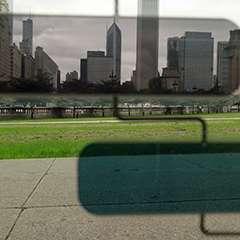• Merck´s new lisicon formulation enables greater power generation of more than 50 W/m² in semi-transparent Belectric OPV modules
• Availability of gray modules is creating broad possibilities for architects and designers
Darmstadt and Nuremberg, Germany, November 26, 2015 – Merck, a leading science and technology company, announced that semi-transparent gray-colored organic photovoltaic (OPV) modules are now available on the market. The new materials, which were successfully developed together with Belectric OPV, were recently presented to the public at the Adaptive Architectures and Smart Materials Conference in Chicago. The showpiece, using gray freeform modules, comprises several laminated glass panes mounted with steel ropes to create a lightweight, curtain-wall-type façade. This offers unlimited design options for modern architectural accents while maintaining transparency and shape.
The modules include Merck’s new lisicon formulation, which achieves superior performance by enabling greater than 50 W/m² power generation in the Belectric OPV modules while remaining semi-transparent. They were optimized and produced in a large-scale production set-up and are ready for commercialization. Merck and Belectric OPV have previously presented the lively blue-colored OPV, which was already used in the installations at the EXPO 2015 at the German Pavilion in Milan, Italy and in the headquarters building of the African Union Security and Peace Council in Addis Ababa, Ethiopia.
There are many important advantages of OPV technology, especially with respect to building-integrated photovoltaics (BIPV). OPV modules do not show the performance drop usually observed with traditional inorganic photovoltaics in diffuse lighting conditions and under elevated temperatures – typical conditions found in façades. In addition, semi-transparency and tunable colors as well as freedom of design in shape and form are attractive and often even essential features for BIPV applications.


























